报告摘要:In this talk insights will be shared into how effective numerical optimization is applied to solving several fundamental problems in geometric modeling, which include curve fitting, surface modeling, and mesh generation. These examples will serve to explain how novel contributions could be made either in formulating suitable objective functions or in developing efficient numerical algorithms, but all based on in-depth study of fundamental properties of the problem at hand. The examples are selected from the works to which the speaker has contributed, so represent only a personal, but engaging, perspective.
个人简介:Dr. Wenping Wang is Professor and Head of Computer Science Department at The University of Hong Kong. He graduated from Shandong University with B.Sc in 1983 and M.Eng. in 1986, and joined HKU in 1993 after receiving his Ph.D. in Computer Science from University of Alberta, Canada. Dr. Wang conducts research in computer graphics, visualization, geometric computing, and scientific computing. He has published over 120 journals papers in these fields and delivered over 30 invited talks at international conferences. He received the Outstanding Researcher Award of The University of Hong Kong in 2013. Dr. Wang is an active contributor to professional services. He is journal associate editor of several premier journals, including CAGD, CGF, TVCG (2008-2012), and IEEE Transactions on Computers (TC). He is Program Chair of Pacific Graphics 2003, ACM Symposium on Physical and Solid Modeling (SPM) 2006, Advances in Architectural Geometry (AAG) 2014, and Conference Chair of Pacific Graphics 2012, SIAM Conference on Geometric and Physical Modeling (GD/SPM) 2013, and SIGGRAPH Asia 2013. He is Chair of Asia Graphics Association.

报告摘要:Immersive Telepresence aims at bringing immersive experience into telecommunication so people across geographically distributed sites can interact collaboratively as if they were face-to-face.In order for computers and users to interact better and in a more natural way, the computer needs to understand users’ activities such as facial expression, attention, hand gestures, speech, and touch. This requires deep understanding of multiple disciplines. In particular, computer vision, graphics and acoustics are indispensable in capturing and rendering 3D dynamic environments in order to create the illusion that the remote participants are in the same room. The existing videoconferencing systems, whether they are available on desktop and mobile devices or in dedicated conference rooms with built-in furniture and life-sized high-definition video, leave a great deal to be desired: mutual gaze, 3D, motion parallax, spatial audio, to name a few. Over the years, Microsoft has been conducting research and development of novel technologies to improve users’ experience in multimodal interaction and immersive telecommunications. I will describe a number of projects involving multi-camera systems, RGBD sensors, microphone arrays, spatial audio, large electronic whiteboards, and mobile devices.
个人简介:Zhengyou Zhang received the B.S. degree in electronic engineering from Zhejiang University, Hangzhou, China, in 1985, the M.S. degree in computer science from the University of Nancy, Nancy, France, in 1987, and the Ph.D. degree in computer science in 1990 and the Doctorate of Science (Habilitation à diriger des recherches) in 1994 from the University of Paris XI, Paris, France. He is a Principal Researcher with Microsoft Research, Redmond, WA, USA, and the Research Manager of the “Multimedia, Interaction, and Experiences” group. Before joining Microsoft Research in March 1998, he was a Senior Research Scientist with INRIA (French National Institute for Research in Computer Science and Control), France. In 1996-1997, he spent a one-year sabbatical as an Invited Researcher with the Advanced Telecommunications Research Institute International (ATR), Kyoto, Japan. He served as an Adjunct Chair Professor with Zhejiang University, Hangzhou, China. He is also an Affiliate Professor with the University of Washington, Seattle, WA, USA, and an Adjunct Professor with the University of Southern California, Los Angeles, CA, USA. He has published 250 papers in refereed international journals and conferences, and has coauthored five books. He is an inventor of more than 120 issued patents, and has received 8 Ship-It Awards from Microsoft. He has given a number of keynotes in international conferences and invited talks in universities.

报告摘要:尽管机器学习技术可以解决信息分析与理解中的很多问题,但现有机器学习模型准确度不够高并且用户很难理解其输出的复杂结果。此外,机器学习模型通常都是黑盒模型,极不直观,导致用户难以诊断并改善模型。本报告将介绍我们提出的复杂数据和模型可视分析框架。该框架跳出传统可视分析“先分析再可视化”的单一方向分析机制,将机器学习方法和交互可视化方法有机地结合在一起,从而更好地帮助用户理解复杂模型及其输出结果,分析、诊断并不断完善机器学习模型。最后,结合具体的应用,如市场分析、医疗卫生舆情分析和深度学习模型分析等,介绍我们基于该框架研制开发的可视分析技术。
个人简介:刘世霞博士是清华大学的副教授。主要研究方向文本可视分析,社会媒体可视分析,日志数据可视分析以及文本挖掘。迄今为止已经在在 ACM/IEEE Transactions和CCF A 类会议上共发表和录用论文 30余篇,40 余项专利及专利申请。担任IEEE VIS 2016-2017 (CCF A类)的论文主席;担任 IEEE Transaction on Visualization and Computer Graphics的 Associate editor;担任国际会议 IEEE Pacific Visualization 2015的程序委员会主席。同时她是 Information Visualization期刊的编委,也是多个国际会议的程序委员会委员,例如 InfoVis、VAST 、KDD、 ACM Multimedia、ACM IUI 、SDM和 PacificVis等。担任IEEE VIS 2014 Meetup 共同主席( IEEE VIS组织委员会)和IEEE VIS 2015 Tutorial共同主席( IEEE VIS组织委员会)。在加入清华之前,刘世霞博士微软亚洲研究院的主管研究员和 IBM中国研究院的资深研究员,信息可视化及分析研究团队负责人。在微软亚洲研究院和 IBM中国研究院她先后参与了文本信息可视化分析,社会网络可视化分析,数据可视化、文本分析等方面的项目研究。她所领导的多项技术研发被微软和 IBM软件产品和解决方案采用。
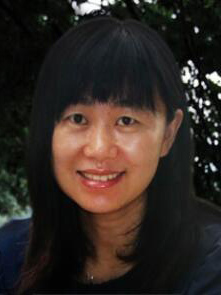
11月5日上午
题目:物体实例级的三维理解和感知
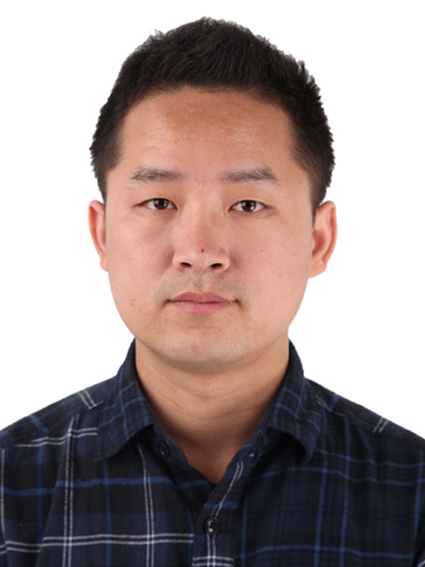
报告摘要:人类在分析视觉场景的过程中运用视觉注意机制,在三维空间中从颜色、尺寸、空间关系等多个角度综合分析输入信息,并以物体、属性、空间关系等语义概念来理解和记忆视觉场景。如何充分借鉴这些认知规律,设计高效的视觉计算方法并提供更加人性化的图像视频交互体验是计算机视觉和图形学中的重要研究课题。本报告将介绍相关领域的一些最新研究进展:i) 基于视觉注意机制的快速场景理解技术及其在图像合成、物体检测、图像检索、和语义分割等领域的应用; ii) 基于语义理解、自然语言交互、和在线学习的图像智能交互技术。
个人简介:程明明,南开大学计控学院副教授、博导、中科协“托举计划”和天津市“青年千人计划”入选者。他的主要研究兴趣包括:计算机图形学、计算机视觉、图像处理等,已在IEEE TPAMI、ACM TOG、ACM SIGGRAPH、IEEE CVPR、IEEE ICCV等顶级国际期刊及会议发表20多篇论文。相关研究成果受到国内外同行的广泛认可。论文他引3000余次,一作论文单篇最高他引1400余次。相关成果曾被英国《每日邮报》、英国《BBC》、德国《明镜周刊》、美国《赫芬顿邮报》等著名国际媒体撰文报道。更多信息请参考: http://mmcheng.net/
11月6日上午
题目:基于常见图像类型的三维建模
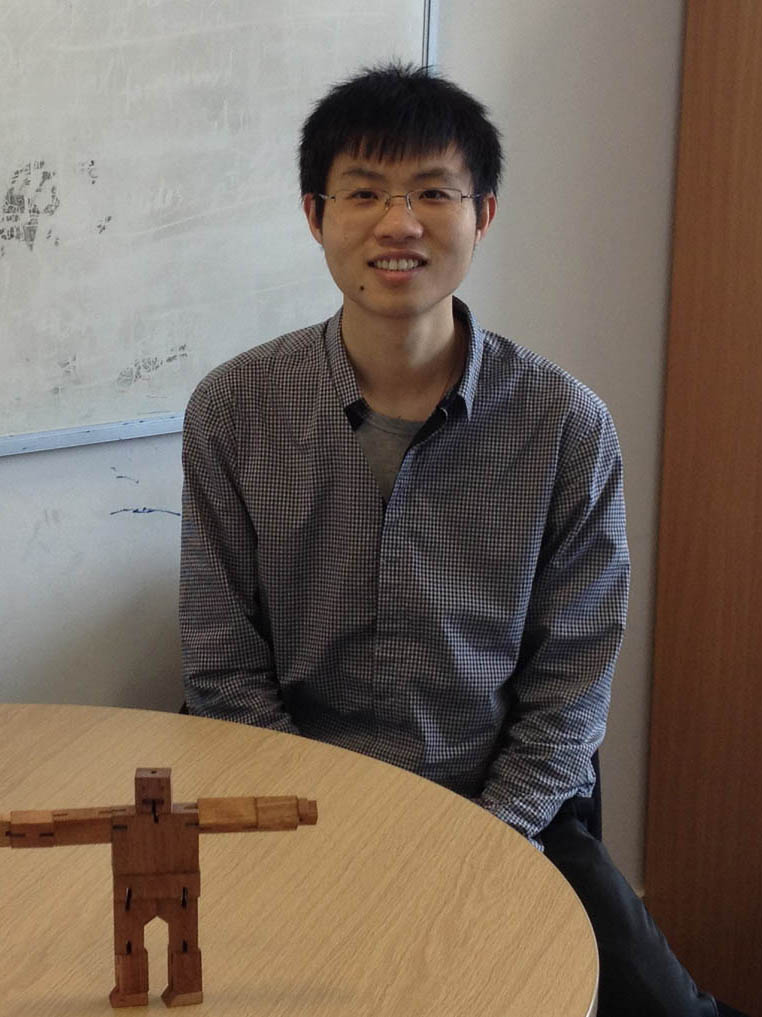
报告摘要:基于图像的三维建模是计算机图形学的重要研究方向。近年来,随着不同类型的图像的普及(RGB图像,RGBD图像,矢量图,手绘),如何基于这些常见图像类型来快速准确地建模出三维模型正逐渐当前计算机图形学领域的前沿热点问题。本人专注于此研究方向,针对不同类型图像展开三维建模的研究工作。在RGBD图像方面,我们实现了基于RGBD图像的室内场景的语义化建模、场景结构恢复和物体形状补全;在手绘方面,我们基于概念草图完成了产品的三维功能建模;在矢量图方面,我们基于家具的矢量装配图实现了家具装配过程的三维动态建模;在RGB图像方面,我们基于单张人像照片实现了全自动的三维头发建模。
个人简介:邵天甲现为浙江大学CAD&CG国家重点实验室的助理研究员。他博士师从郭百宁教授,于2014年1月在清华大学高等研究院获得计算机博士学位。此前他于2008年在清华大学自动化系获得学士学位。在加入浙大之前,他于2008年9月至2012年8月在微软亚洲研究院IG组作为研究实习生长期参与研究工作。2012年8月至2013年6月,他作为访问学生在英国伦敦大学学院和Niloy Mitra教授合作参与研究工作。邵天甲曾担任SIGGRAPH ASIA 2015&2016 Technical Briefs & Posters组委会成员,Computational Visual Media 2017组委会成员,并多次担任SIGGRAPH,SIGGRAPH ASIA等国际会议和期刊的论文评审。2015年邵天甲获得“陆增镛CAD&CG高科技奖”二等奖。邵天甲的研究兴趣主要包括基于图像的三维建模,室内场景的扫描、建模与分析。
题目:Digital Material Appearance in Computer Graphics

报告摘要:Digital material appearance in computer graphics characterizes the light/material interactions to realistically model physical appearance. However, the intrinsic high-dimensional nature of material appearance makes it difficult to efficiently acquire, edit or render the corresponding digital representation, thus hindering its wider application in areas such as VR/AR or gaming industry. In this talk, I will describe the challenges and the approaches in my recent research on casual material modeling, micro-scale material acquisition, bi-scale material design and human perception of material appearance functions. The line of work results in several publications in top journals such as ACM Transactions on Graphics and IEEE Transactions on Visualization and Computer Graphics.
个人简介:Hongzhi Wu is currently an assistant professor in State Key Lab of CAD&CG, Zhejiang University. His research interests include appearance modeling, design and rendering. Hongzhi received his Ph.D. from Department of Computer Science, Yale University in 2012 and B.Sc. from Department of Computer Science and Engineering, Fudan University in 2006. He was also a visiting student in Internet Graphics Group, Microsoft Research Asia. More detailed information can be found from: http://www.cad.zju.edu.cn/home/hwu/.
题目:三维模型的功能性分析和制造优化
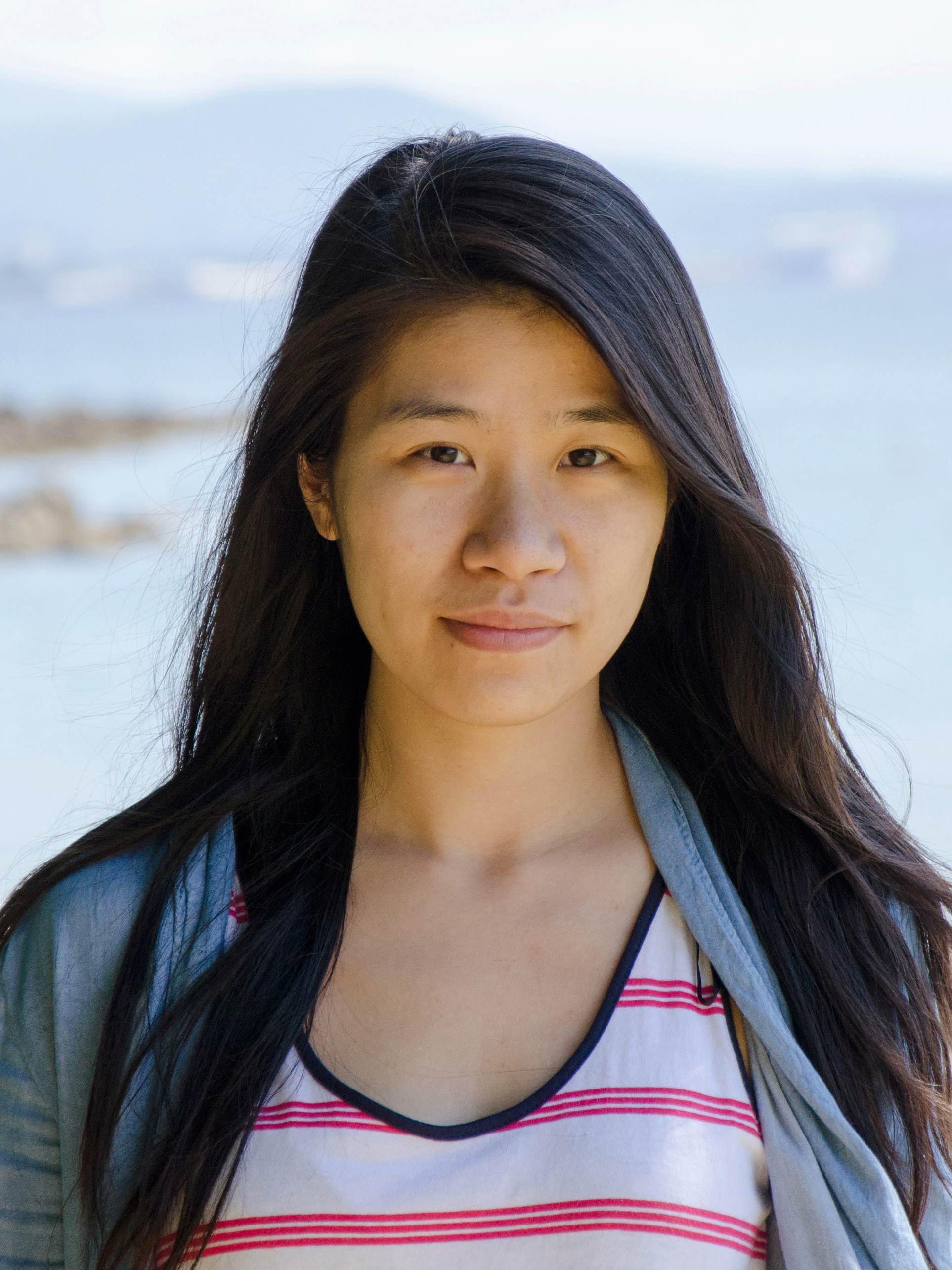
报告摘要:一方面,当前计算机图形学对于几何数据的高层分析和处理的研究方兴未艾,很多研究者开始将研究重心从几何分析,转到结构分析,再转向功能分析。当前正是在功能分析上做出突破性研究的关键时刻 。另一方面,三维打印技术颠覆了人们和公司对于加工制造过程的传统认知,同样也已成为当前的研究热点。三维打印技术的快速发展带动了一些新的相关研究,优化模型设计和打印过程是其中的热点问题。功能性是对物体本质特性的描述,而三维模型的打印制造则是为了对其功能性的具体实现,因此二者具有紧密的联系。本报告将主要对这两方面的工作以及两者之间的关系进行概述性介绍。
个人简介:胡瑞珍,深圳大学计算机与软件学院助理教授,可视计算研究中心副主任。2015年6月毕业于浙江大学数学系,取得理学博士学位,并获省优秀毕业研究生称号。于同年,加入可视计算研究中心,并入选“深圳市海外高层次孔雀人才”。攻读博士学位期间,获国家留学基金委资助访问加拿大西蒙弗雷泽大学两年。研究兴趣主要集中在计算机图形学,特别是高层次形状分析、几何处理和模型制造。截止目前,共发表11篇高水平论文,其中6篇发表于图形学国际顶级会议SIGGRAPH (Asia)和期刊ACM Transactions on Graphics,1篇发表在几何处理国际顶级会议SGP。个人主页:http://csse.szu.edu.cn/staff/ruizhenhu/。
题目:物体实例级的三维理解和感知
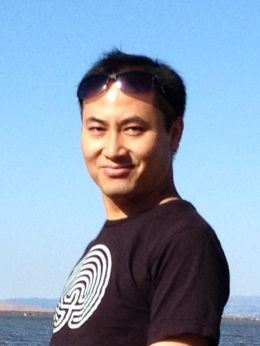
报告摘要: 近年来,计算机技术的发展正逐步尝试把人类从一些特定的繁杂的智力劳动中解放出来,比如自动驾驶、智慧城市和智能制造等。计算机对现实世界物体实例级的三维理解和感知是实现这类目标的关键技术之一,可以使计算机不仅能够“看懂”现实世界,而且能够知晓如何精细地和现实世界进行交互。在本报告中,我将介绍针对单幅图像的三维物体检索及姿态估计技术,以及面向三维数据的深度学习技术。希望通过这些展示物体实例级三维理解和感知的现状,并探讨未来发展方向。
个人简介:李扬彦博士(http://www.yangyan.li)2013年获得中国科学院大学博士学位,之后先后赴美国斯坦福大学和以色列特拉维夫大学从事博士后研究工作,2016年底入选山东大学“齐鲁青年学者”特聘教授加入山东大学计算机科学与技术学院。研究方向为计算机图形学和计算机视觉,主要研究基于点云以及图片的三维建模及语义建模,研究成果发表于ACM SIGGRAPH(Asia)、IEEE ICCV和IEEE NIPS等计算机图形学和计算机图形学相关领域的顶级国际会议,受到学术界和工业界的广泛关注。
题目:三维自锁结构设计、制造与应用
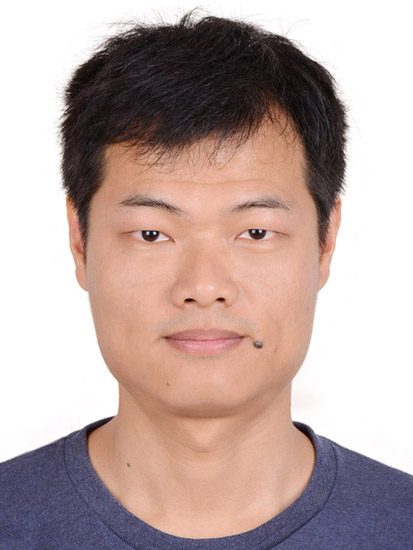
报告摘要: 三维自锁结构是由多个部件组成的、可组装和拆解的三维几何模型。所有部件组装好后,它们通过自身的几何形状相互自锁连接成一个整体,使得整个结构非常稳固。三维自锁结构设计以给定三维形状和指定的部件数目作为输入,通过自动分解三维形状得到指定数目的部件,同时通过构造部件的几何形状或者部件上连接头的几何形状达到让所有部件三维自锁连接的目的。三维自锁结构可以通过乐高拼块、木匠工艺、3D打印、激光切割等方法制造出来,其应用包括益智玩具、家具设计、3D打印大物体等领域。
个人简介: 宋鹏,中国科学技术大学特任副研究员。2007年本科毕业于哈尔滨工业大学航天学院,2009年硕士毕业于哈尔滨工业大学深圳研究生院,2013年于新加坡南洋理工大学计算机工程学院获得博士学位。2014年起就职于中国科学技术大学计算机科学与技术学院。主要研究方向为计算机图形、计算机视觉、人机交互。近年来在SIGGRAPH, SIGGRAPH Asia, TVCG, CHI等国际重要期刊会议上发表学术论文20余篇。
题目:数据驱动的人体运动逆向动力学建模方法
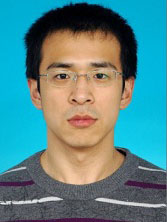
报告摘要: 逆向动力学是人体运动建模仿真、机器人和生物力学领域一个重要且有挑战性的问题。传统的逆向动力学解决方法通常不够准确且当运动出现双支撑的情况下求解存在歧义性。我们提出一种数据驱动逆向动力学求解新方法,能够从输入的运动学数据中重建生物力学准确的地面接触信息和关节力矩信息。其内在机理是使用统计建模技术对预先采集的人体运动学和动力学数据构建先验模型。我们对多种不同的人体运动展示了我们方法的准确性。此外,我们讨论了如何扩展数据驱动逆向动力学框架解决运动编辑、运动过滤和运动控制问题。
个人简介:吕晓磊,博士生,来自于中国科学院计算技术研究所前瞻研究实验室人体运动仿真研究组,研究方向是基于物理的人体运动建模仿真。
题目:一种针对介质的自适应矩阵列采样与填充绘制算法
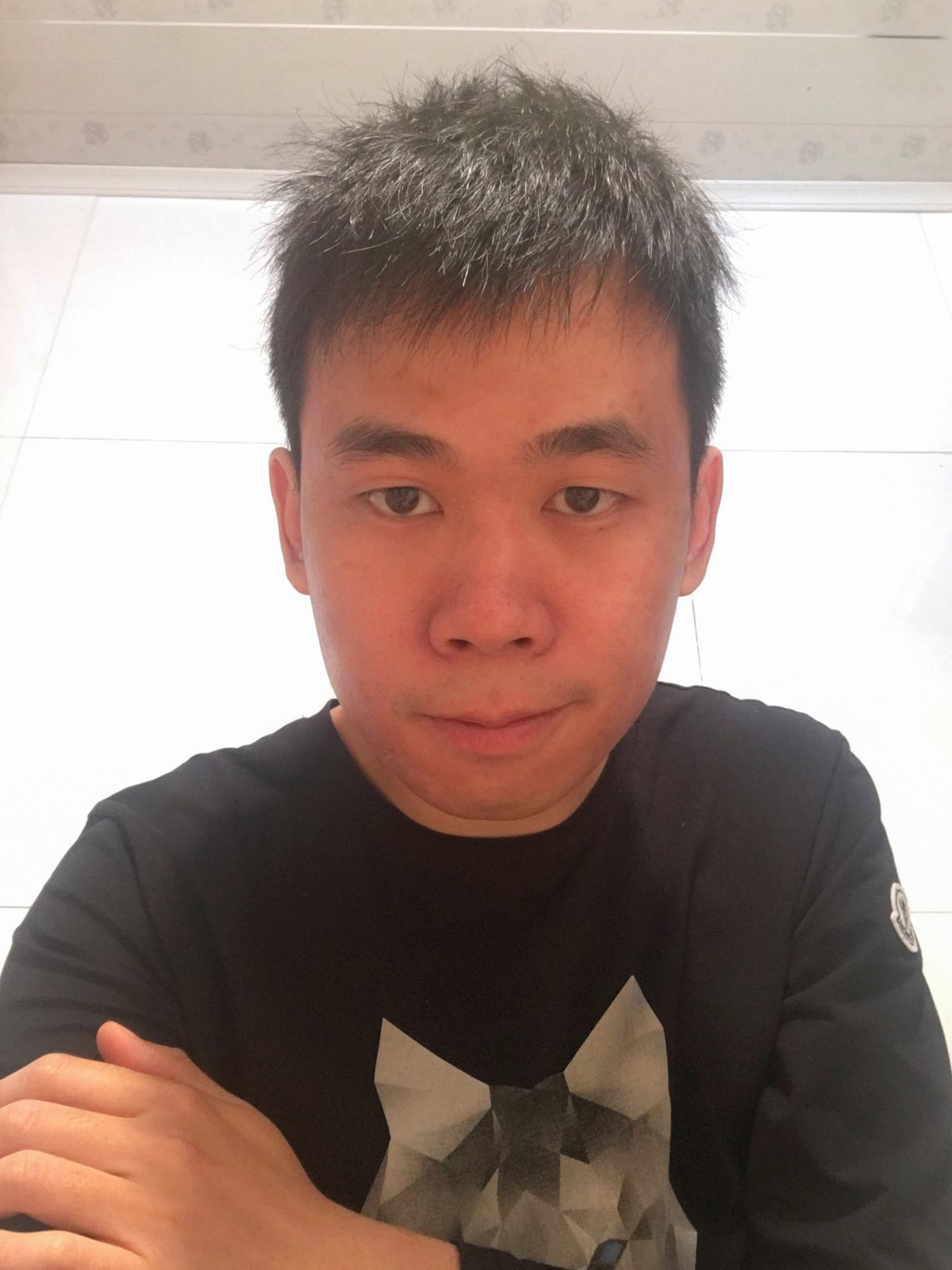
大量光源算法以其效率和可伸缩性闻名,但其收集阶段仍是非常耗时的。我们提出了稀疏矩阵采样与还原的思想来加速算法,在之前的工作提出可见性预测器结合矩阵分离的方法在不含介质的场景中取得了一个量级的加速。但是该方法受限于场景二元可见性和稀疏误差的要求,并不能准确地绘制带介质场景。为此我们今年针对带介质场景提出了一种自适应矩阵列采样与填充算法。算法提出了基于图划分的虚拟线光源段生成及大量光源矩阵构建,使用层次结构自适应采样算法稀疏采样矩阵的列,并借用自适应矩阵还原的思想通过维护并更新矩阵的列空间来稀疏重构被采样的列。在我们的实验中,算法在带介质的场景中比之前最先进的方法最高达到了一个量级的加速度。
个人简介: 目前就读于浙江大学CAD&CG国家重点实验室,在鲍虎军导师的指导下攻读博士学位,同时接受王锐老师的指导。主要的研究方向为离线全局光照绘制,近年致力于提高高质量的大量光源算法的速度,并解决大量光源算法对out-of-core光源与场景的规模和效率限制。
题目:基于法向级联回归的三角网格去噪
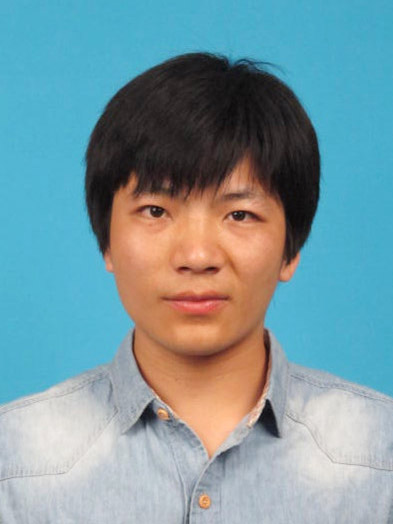
报告摘要: 我们提出了一种数据驱动的三角网格去噪算法。其核心思想是用一个级联的非线性回归函数来描述三角网格的去噪过程,并且从数据中学习它们。具体来讲,我们提出了一种全新的特征向量(FND)对噪声网格上每个小面周围的几何特征建模,并用神经网络作为回归函数。 我们的方法对输入模型中的噪声分布和几何特征没有做特定的假设。线下训练之后,运行阶段是完全自动的。我们在具有合成的噪声和真实扫描噪声的模型上做了大量实验。结果表明,我们的方法优于当前其他最先进的网格去噪方法。
个人简介:王鹏帅,现在是清华大学高等研究院的一名四年级的博士研究生。我加入了清华-微软的联合培养项目,我的导师是郭百宁教授。我现在主要在微软亚洲研究院图形组的刘洋博士和童欣博士的指导下做研究。在此之前,我于2013年从清华大学获得了工学学士学位。我的研究兴趣主要包括计算机图形学和几何处理。目前为止,我已经有两篇论文发表于SIGGRAPH Asia。
题目:3D Mesh Labeling via Deep Convolutional Neural Networks
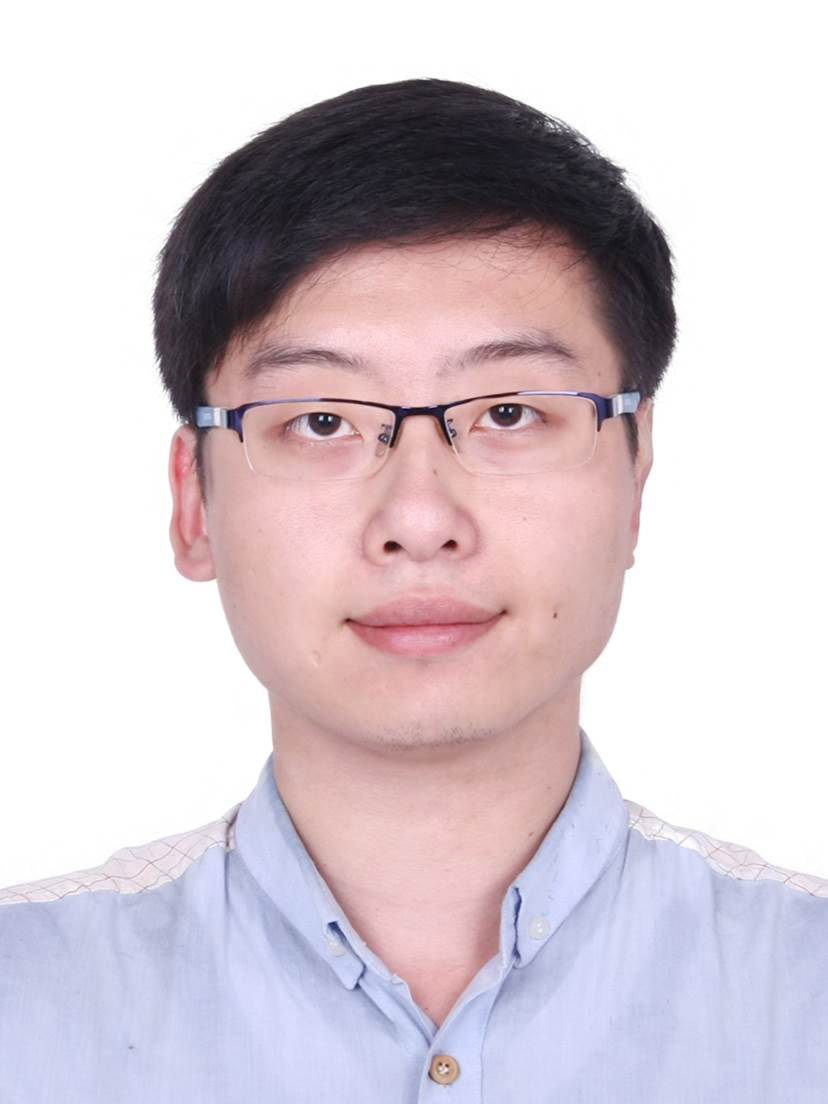
报告摘要: This article presents a novel approach for 3D mesh labeling by using deep Convolutional Neural Networks (CNNs). Many previous methods on 3D mesh labeling achieve impressive performances by using predefined geometric features. However, the generalization abilities of such low-level features, which are heuristically designed to process specific meshes, are often insufficient to handle all types of meshes. To address this problem, we propose to learn a robust mesh representation that can adapt to various 3D meshes by using CNNs. In our approach, CNNs are first trained in a supervised manner by using a large pool of classical geometric features. In the training process, these low-level features are nonlinearly combined and hierarchically compressed to generate a compact and effective representation for each triangle on the mesh. Based on the trained CNNs and the mesh representations, a label vector is initialized for each triangle to indicate its probabilities of belonging to various object parts. Eventually, a graph-based mesh-labeling algorithm is adopted to optimize the labels of triangles by considering the label consistencies. Experimental results on several public benchmarks show that the proposed approach is robust for various 3D meshes, and outperforms state-of-the-art approaches as well as classic learning algorithms in recognizing mesh labels.
个人简介: I am currently a fulltime ph. D. Student conducting research in computer graphics in Beihang University. My research interests are computer graphics, computer vision, and machine learning. I particularly focus on analysis of 3D shapes. Potential applications include 3D shape editing, modeling, virtual/augmented reality, etc.
题目:GPU上的高效并行矢量图形绘制
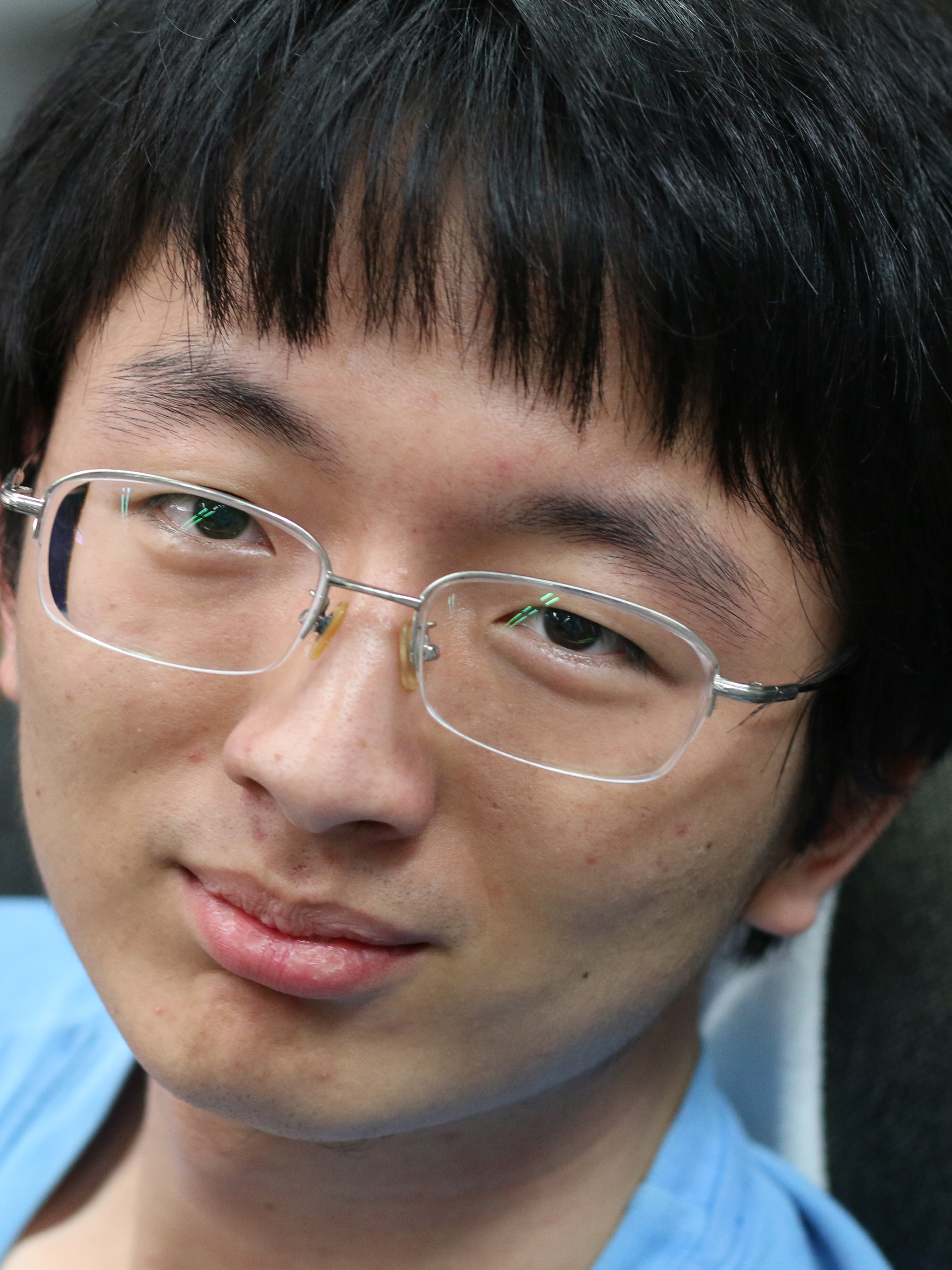
报告摘要: 我们提出了一种基于扫描线技术的GPU并行矢量图形渲染方法。这一方法着重于矢量图形轮廓线上的并行操作,将轮廓线沿像素边界裁剪成大量小片段并行处理。这一设计充分利用了GPU批量处理简单、重复任务的优势,从而达到了高GPU使用率。非轮廓线的部分被视为横向的长方形填充区域,利用处理后的轮廓线片段信息生成。我们设计的扫描线方法减少了全局数据依赖性,节省了大量的GPU内存带宽。实验表明,我们的性能平均比之前的方法提升2.5倍,极端情况下可达30倍。用于矢量图形动画绘制可以得到 10倍以上性能提升。
个人简介:李睿,浙江大学计算机科学与技术学院在读博士生。师从CAD&CG实验室GAPS组周昆教授、侯启明副教授。本科毕业于浙江大学竺可桢学院求是科学班(计算机)。目前的研究兴趣和方向是GPU并行算法、矢量图形绘制。
题目:基于SPH的固-流交互多相模拟
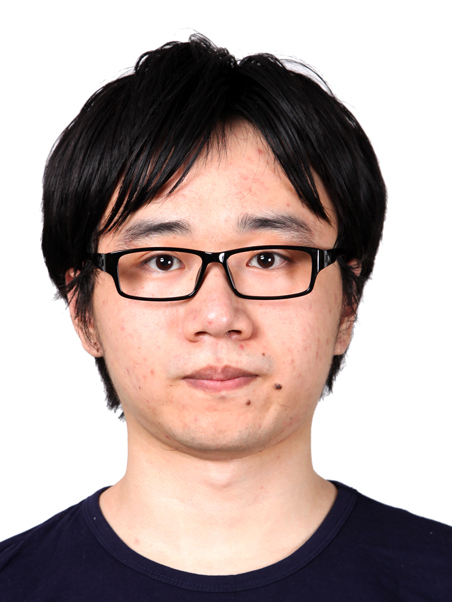
报告摘要: 本项工作扩展了原有的多组分流体的SPH框架使其能处理包括可变形体,颗粒物质等固体的模拟。所有固体和液体的分布和形状都通过一组统一的体积分数来表示。不同的物质所构建的本构方程也仅仅需要速度梯度和体积分数来决定。我们的模拟器可以在一个统一框架下模拟包括:变形体,颗粒状材料,多组分流体和变形体的交互,多孔介质流和溶解等物理现象。
个人简介: 严枭,2009年通过信息学竞赛保送至清华大学电子系,2013年本科毕业之后,在清华大学计算机系直博研究计算机图形学中物理模拟相关领域。
题目:基于双向路径跟踪的实时声音传播模拟方法
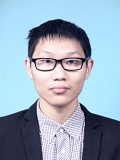
报告摘要: 本报告将介绍一种基于双向路径跟踪的声音传播模拟方法,可以在个人计算机上进行复杂声学场景的实时模拟。通过利用时间相关性,我们的方法可以根据先前的模拟结果,动态地调节样本的时间分布,以达到更高的模拟质量。大量场景中的实验证明,与已有的同类型声传播模拟算法相比,我们的新方法有明显的效率提升。 双向路径跟踪是非常成熟的图形渲染算法。尽管图形渲染与声传播模拟有很多相似之处,然而相关领域的交流却并不多。我们的研究可以视为将两者联系起来的一个尝试。
个人简介:曹春晓,1993年生,浙江杭州人,博士研究生在读。2010年考入浙江大学,进入数学系信息与计算科学专业,于2014年本科毕业,随后进入浙江大学计算机系攻读博士学位。目前工作于计算机辅助设计与图形学国家重点实验室。主要研究方向为虚拟声学环境,并对相关的图形学渲染与物理模拟技术感兴趣。已有一篇文章发表于SIGGRAPH ASIA会议。
题目:Perforated Lampshades Design and Connected Fermat Spirals in Layered Fabrication
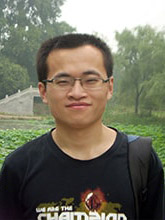
My talk is based on two papers presented at SIGGRAPH 2016, about printed lampshades for continuous projective images, and toolpath planning for layered fabrication. In the first paper, we present a technique for designing 3D-printed perforated lampshades that project continuous grayscale images onto the surrounding walls. Given the geometry of the lampshade and a target grayscale image, our method computes a distribution of tiny holes over the shell, such that the combined footprints of the light emanating through the holes form the target image on a nearby diffuse surface. In the second paper, we develop a new kind of "space-filling" curves, connected Fermat spirals, and show their advantages as a tool path fill pattern for layered fabrication. Unlike classical space-filling curves such as the Peano or Hilbert curves, which constantly wind and bind to preserve locality, connected Fermat spirals are formed mostly by long, low-curvature paths. This geometric property, along with continuity, greatly influences the quality and efficiency of layered fabrication. We demonstrate that printing 2D layers following tool paths as connected Fermat spirals leads to efficient and quality fabrication, compared to conventional fill patterns.
个人简介: I am a Ph.D candidate student of Interdisciplinary Research Center(IRC), Shandong University, supervised by Prof. Baoquan Chen, and have been collaborating with Prof. Daniel Cohen-Or, Prof. Dani Lischinski, Prof. Hao (Richard) Zhang, Prof. Andrei Sharf from 2013. My research interests are Computer Graphics, Geometry Process and 3D printing. I have worked on several 3d printing related projects with one paper published in SIGGRAPH 2014 and two papers presented at SIGGRAPH 2016 about saving materials in 3D printed objects, printed lampshades for continuous projective images and toolpath planning for layered fabrication.
